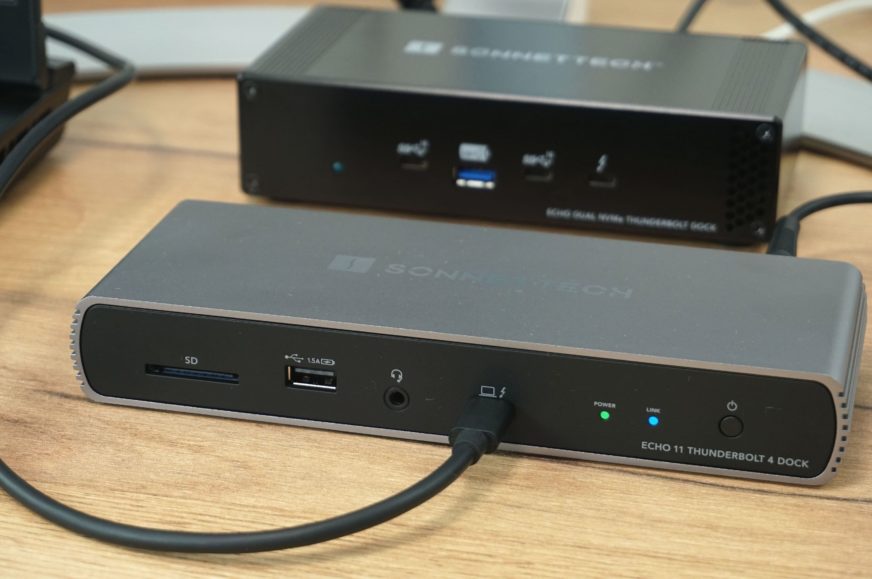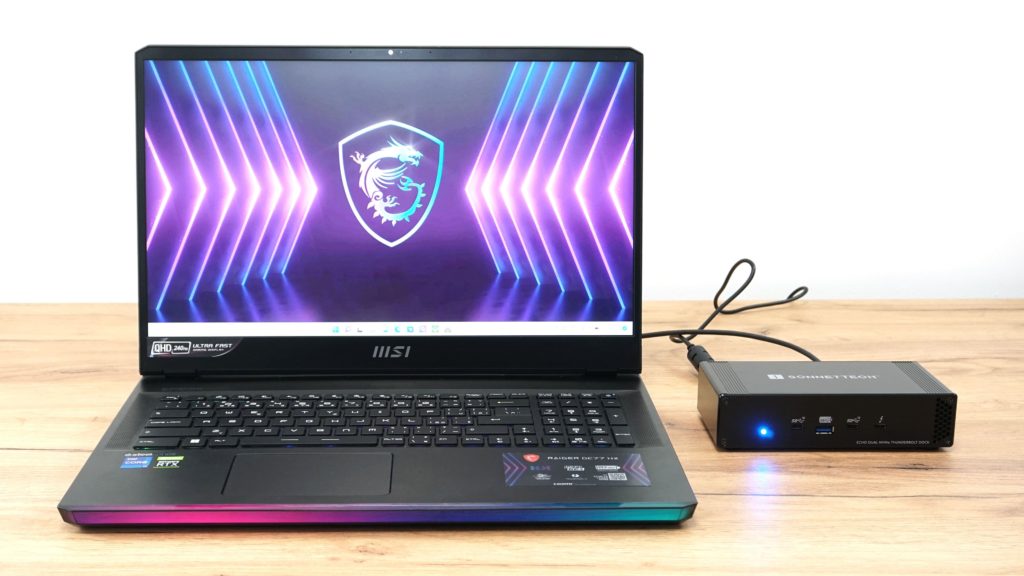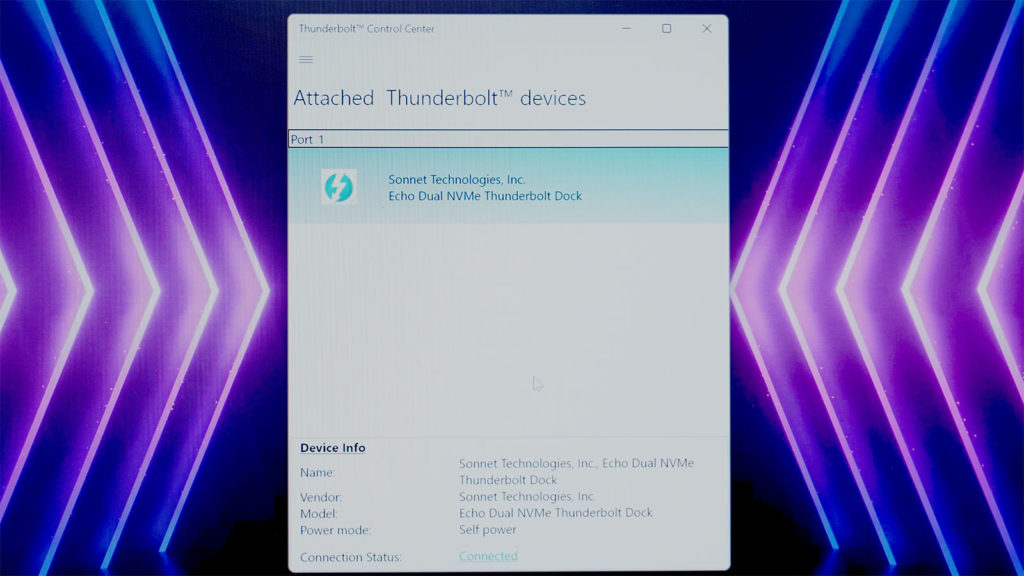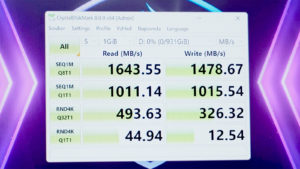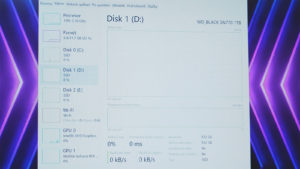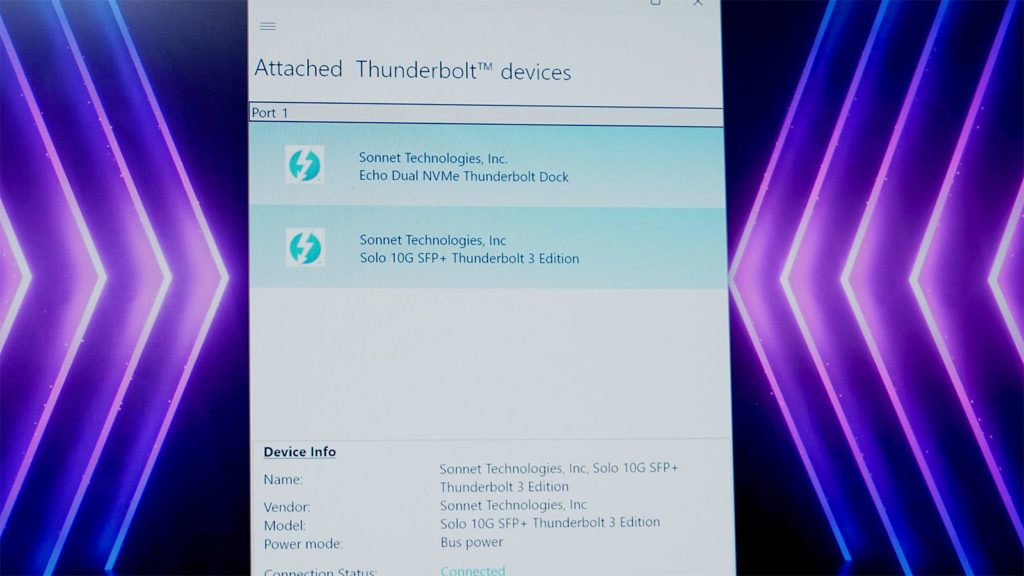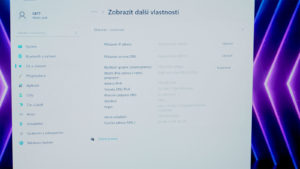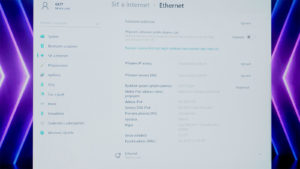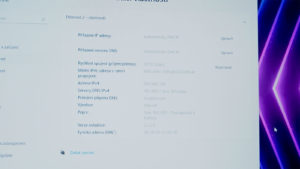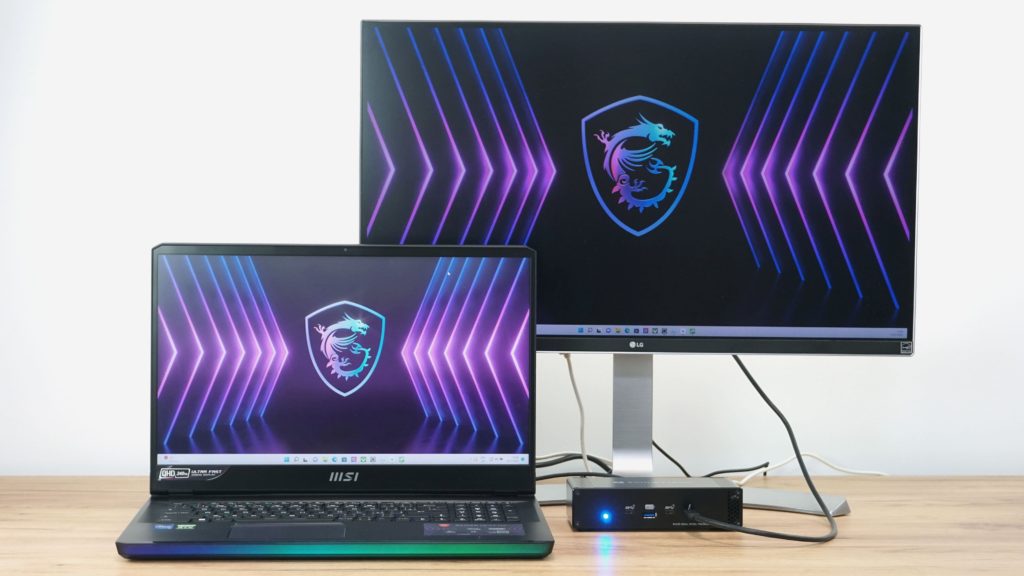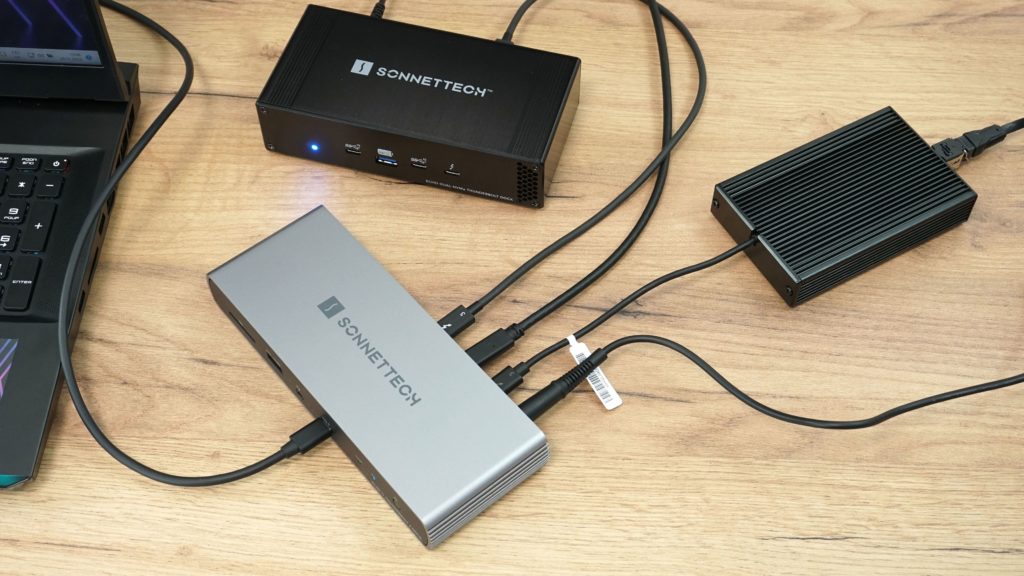Echo 11 Thunderbolt 4 Dock
Modern docking stations look a little different than they did years ago. Firstly, no more proprietary connectors, and for another, they allow you to connect a large number of accessories thanks to the very high-bandwidth Thunderbolt interface. A port in a laptop itself is a good start, but it doesn’t mean “anything” on its own and needs a little help to branch out. And that, in the context of this test, is the task of Sonnet, the docking station specialist.
Tests for Windows
We will start our dock tests on a more widespread platform, which is Windows. For our test, we used the MSI GE77 Raider laptop we recently tested.
We first connected the Echo Dual with a pair of WD drives. The Thunderbolt app correctly detected the connected device for us, but the surprise was that on Windows 11 we no longer needed to approve the connection as we used to on Windows 10.
As the drives were brand new, it was necessary to format them first, which was done without difficulty.
In CrystalDiskMark 8.0 we achieved slightly better results than the manufacturer claims, at least in the case of read speeds. Here we crossed the 1600 MB/s threshold, while writing was just below the claimed 1500. Although this is not a test of the drives as such, you can see that the SN850X offers better values in several tests, but wait for the review for a full assessment.
The Echo dual also offers a single Thunderbolt port for accessories, and we tested that too. First, we plugged in the Solo 10G SFP+, which you may already be familiar with from the Asus 10 Gb router test.
The application again correctly detected another Thunderbolt device.
And also the 10 Gb ethernet connection worked without any problems. So this is a significant improvement over the 1/2.5 Gbps that you would normally use on a laptop.
You can also use the front port to connect a monitor. With a 4K 60 Hz monitor, there was also not a single problem.
Let’s move on to the Echo 11. This one also connected on the first try and automatically, without the need for any intervention.
Since its most interesting feature is the ability to connect up to three other devices simultaneously, we focused on this feature. So we connected the monitor, the Solo 10G and the Echo Dual to the Echo 11. So only one cable went to the laptop, but realistically we got nine usable USB ports, 10 Gb ethernet and a 4K display.
Even with all three devices plugged into the Echo 11, I didn’t notice any issues with the display, network, or storage. Everything worked on the first try and reliably.
If we were using a less powerful ultrabook, the Echo 11 could even charge it, and you’d get a complete work setup with one cable.
- Contents
- Echo 11 Thunderbolt 4 Dock
- Echo 11 Thunderbolt 4 Dock
- Echo 11 Thunderbolt 4 Dock
- Echo 11 Thunderbolt 4 Dock
- Echo 11 Thunderbolt 4 Dock





